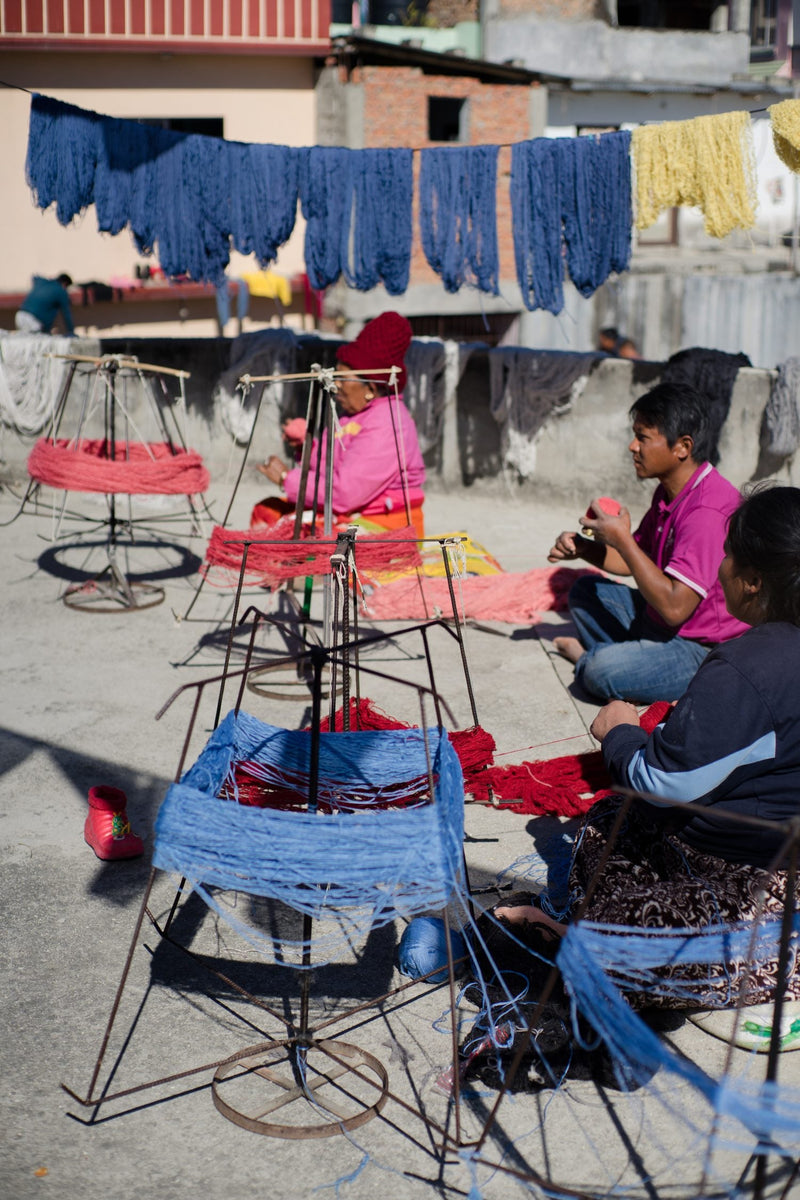
Weaving a Hand Knotted rug
It goes without saying, there’s something seriously special about a hand knotted rug…
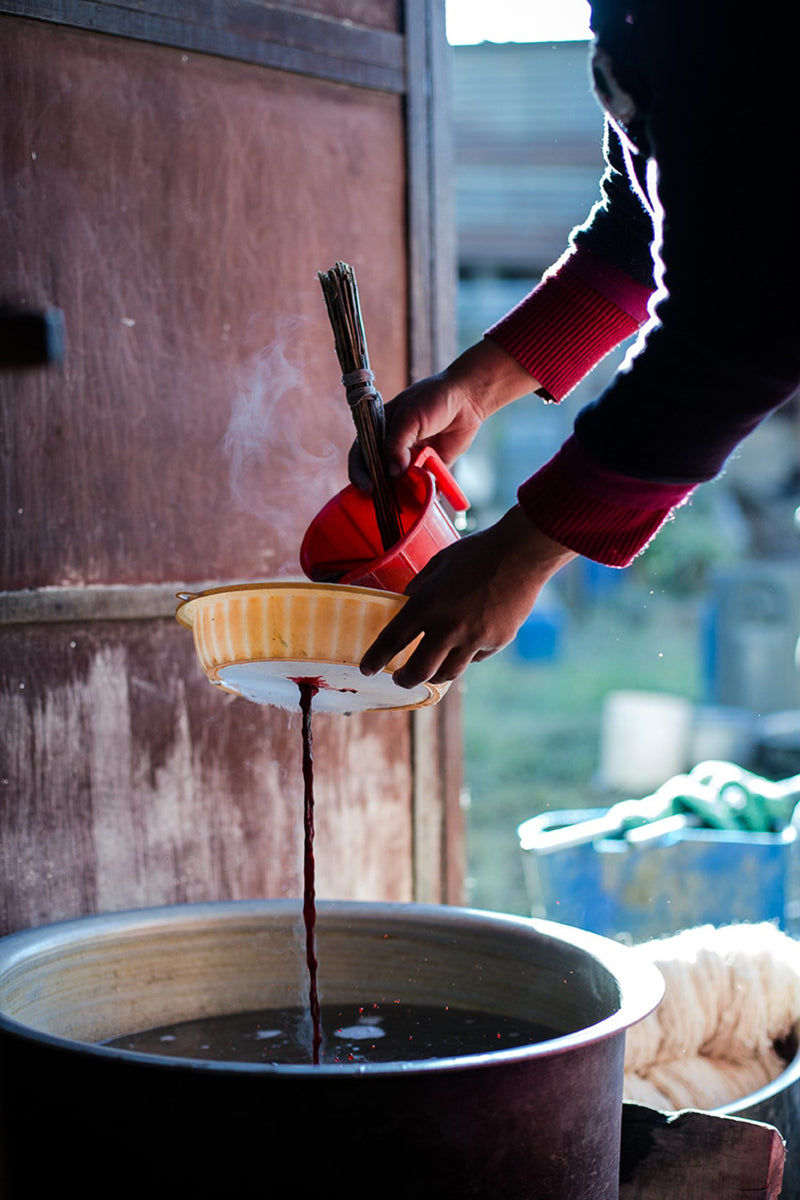
It’s mind boggling how many processes go into creating one of these rugs that will last generations. We’ve been producing these beauties for 10 years and have worked with some truly talented weavers over this time to achieve only the highest of quality.
Hand knotted rugs are made on a loom, the wool yarns are individually knotted. Knots are similar to pixels in a digital image, the more knots they contain, the denser and more detailed they are.
Our hand knotted styles range in density from 60-knots per inch right up to 150-knots for incredibly fine, velvet-like softness. They really are unbeatable for providing a luxurious, artisanal feel, a beautiful piece of textile that is truly fit for purpose.
All of the hand knotted rugs that we produce are fair trade assured by Label STEP.
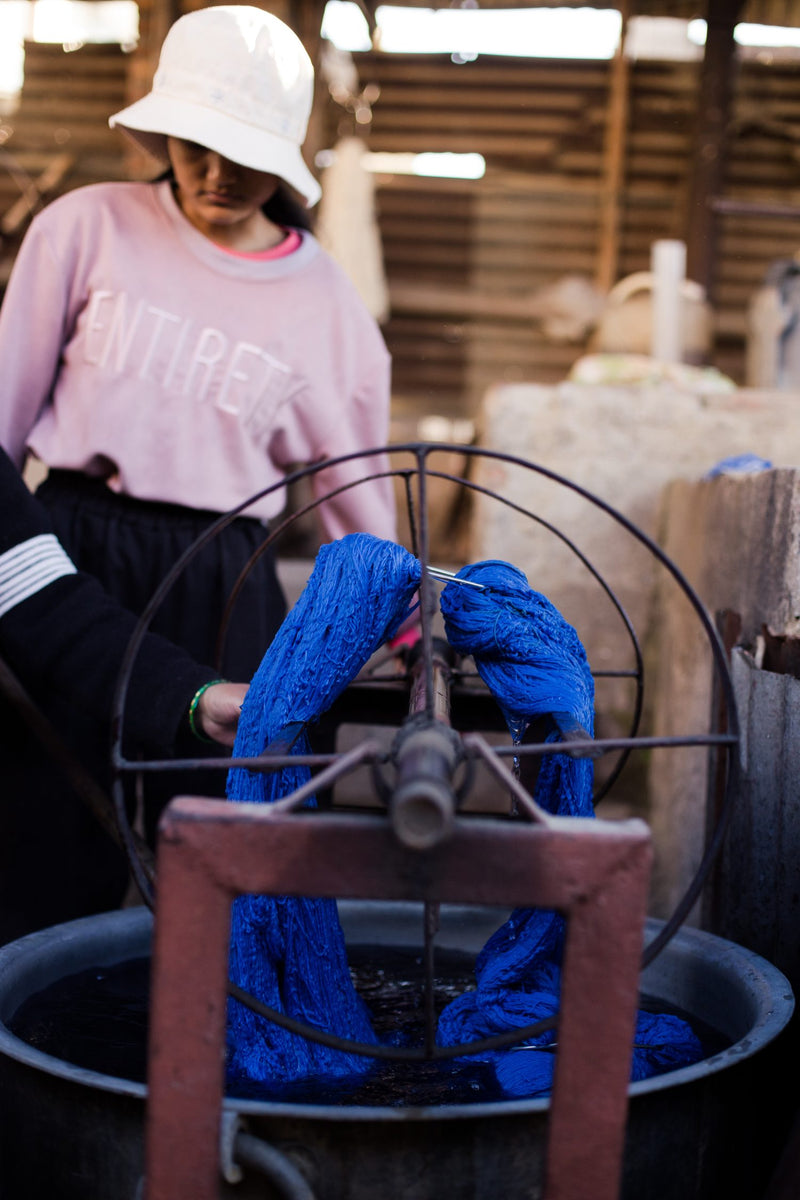
Dying and Spinning of Materials
The raw materials that have been weighed out are then sent to the Dye Master and their team, who will at first test small batches to match the colours of the poms we have selected in London. When they have made the match they use the formula they have created to dye the rug materials. After the materials have been dyed, washed and dried, it is then sent back to the weavers who spin the hanks of material into balls.
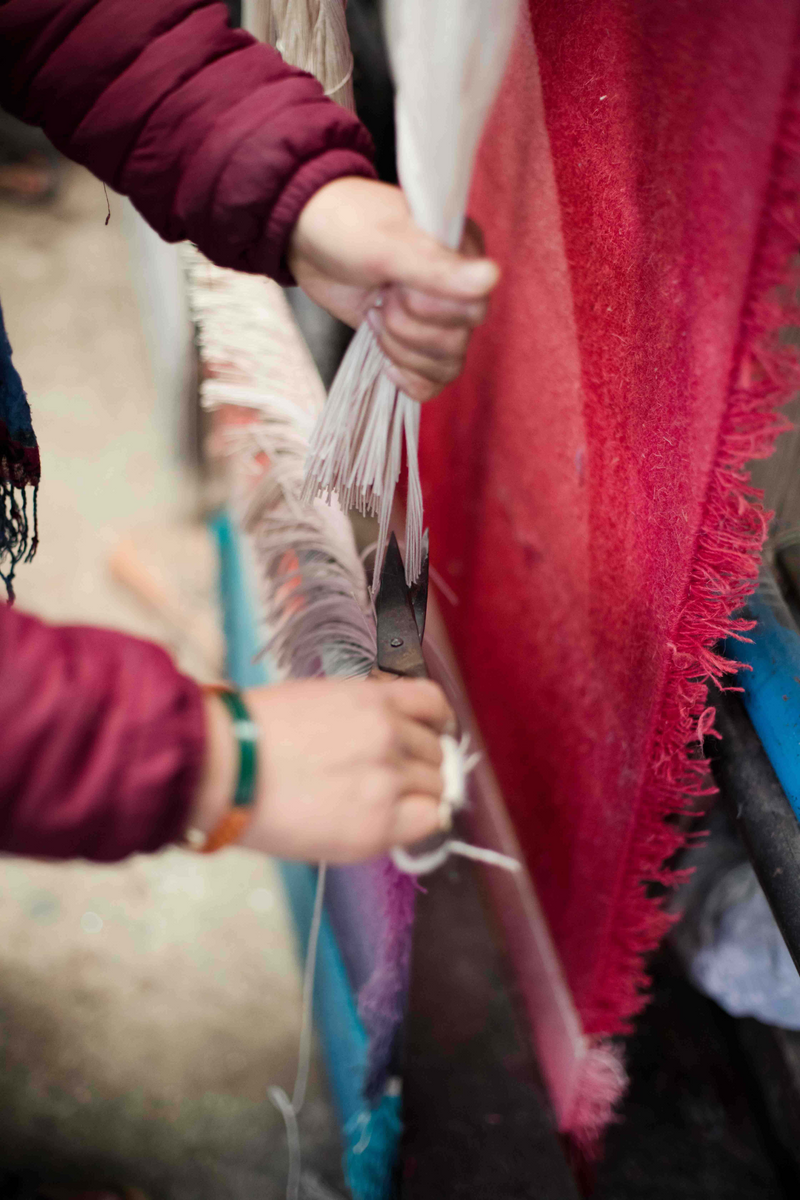
Weaving and Off Loom
The weavers now have the dyed materials, graph and colour card to begin weaving. The last items they will need are the metal rods which come in different thicknesses. The weavers use the rods to tie the knots onto the warp and the different thicknesses create different pile heights.
When the weaving has finished, which can take anywhere between 8-16 weeks depending on the design, the rug is then cut off the loom and the first stage of carving takes place.
Carving is used between different colours and materials, can be subtle or deep depending on the desired effect and also to create different pile heights.
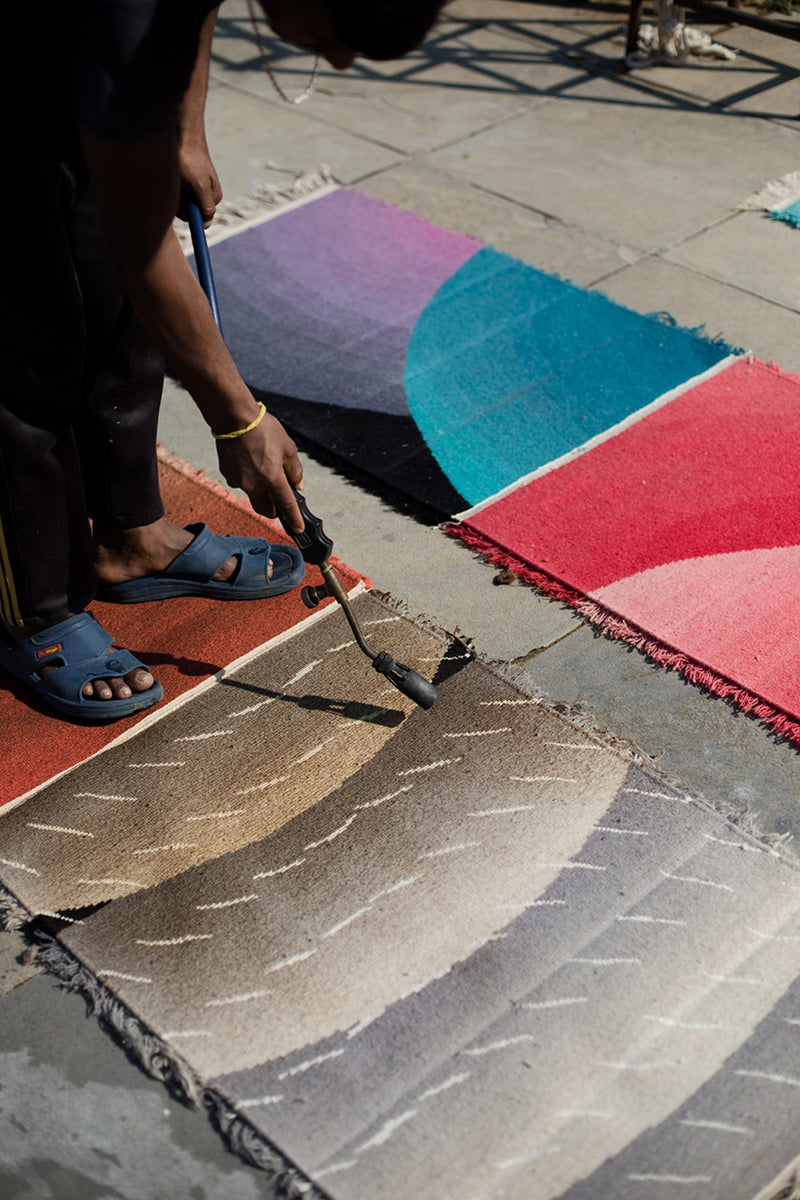
BURNING, SWEEPING, WASHING, DRYING AND STRETCHING
The rug is then taken to a specialist location where it is first burned on the back to clean away any loose fibres and swept. This does not damage the rug in any way as the materials we use are naturally fire retardant.
The rug then goes through the washing process before being stretched out onto a metal frame using hooks to dry. The frame is used so that the rug keeps its shape and helps with preventing further shrinkage.
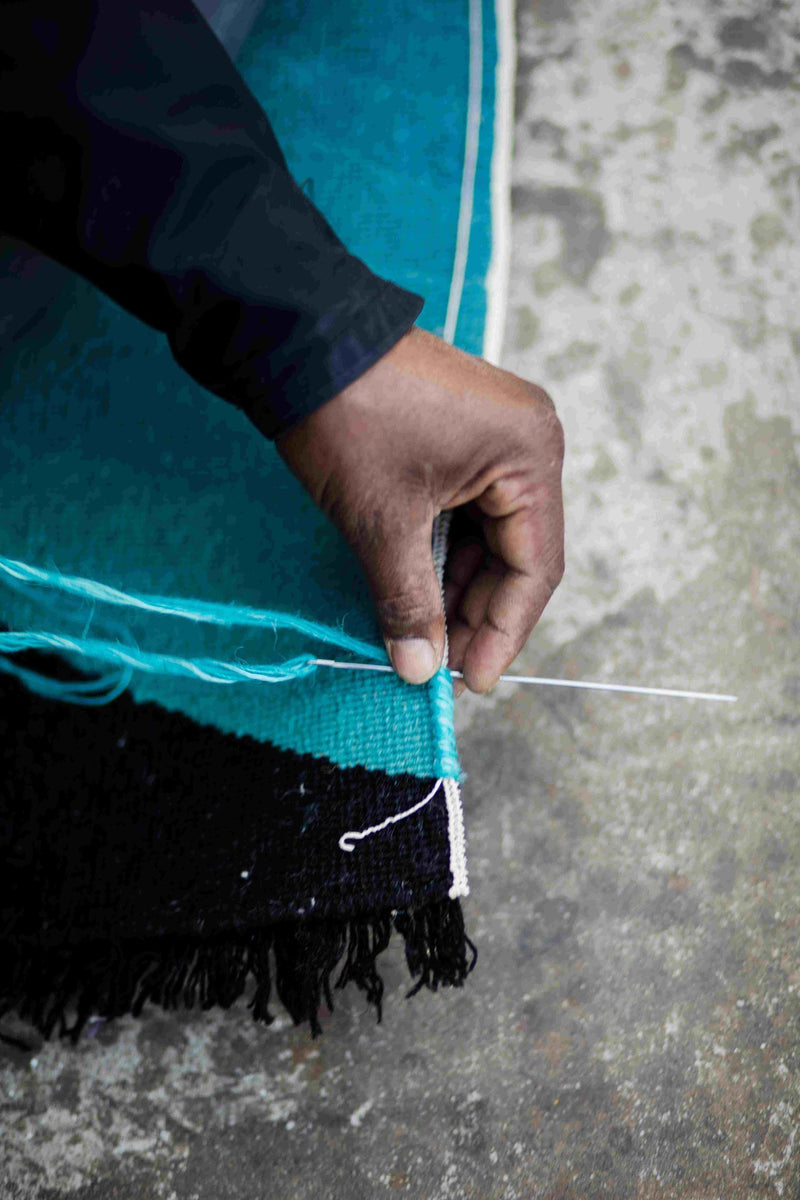
Final Finishing Stages
When the rug is completely dry it is brought back to our own facilities to go through final carving, finishing and the binding stage, which means that the edges of the rug are sewn. Pictures of the rug are then sent to us in London so we can provide feedback on the finishing stages and if anything additional is needed. The rug is compared to the initial spec sheet in detail to make sure all instructions for the design were followed before being labelled and packed for shipping.
Featured
Rugs
Kangan Arora
Harlequin Runner
Henry Holland








